The cultural side of the Atlantic - Events not to miss for an authentic experience on EuroVelo 1
While travelling along EuroVelo 1 – Atlantic Coast Route, breathtaking landscapes are a regular feature. But there is much more: along the 11,000km of the route, you pass through vibrant cities and villages with a large history and traditions which are celebrated across the year. In this article, you will find suggestions to complement your trip along EuroVelo 1 with visits to cultural sites and festivals and make the most of the rich heritage and traditions along the way.
When cycling in the summer, open-air festivals are a must-do while on a long or short-distance trip. They celebrate long-standing folk traditions, contemporary music and arts during the warm season and the longer days.
On other seasons or simply on a stormy day, a visit to a local museum is a good way to learn more about the culture, arts and crafts of the dozens of towns and cities on EuroVelo 1, and to get familiar with traditions and heritage.
Let’s get started!
From the Nordland Music festival to the Polar Museum in Norway
Norway comes alive in the summer, when the snow gives place to the green landscapes and flowers, and it is the home of the stunning midnight sun. Summer is also the season of festivals, which you may meet along EuroVelo 1 and its coastal Norwegian route. In Bodø, the Nordland Music Festival combines classical music with jazz, folk music, musical theatre, dance, pop, rock and more. The festival takes place in the first half of August in several venues, including the city’s cathedral, and has a programme to support up-and-coming Norwegian classical musicians.
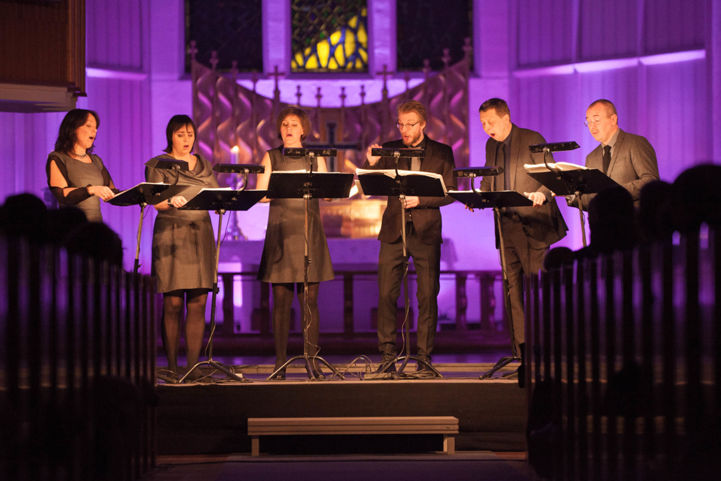
Whichever stretch of EuroVelo 1 in Norway you may take, it is likely that you will come across a festival in smaller or larger towns in Norway. Above the Arctic Circle, in Tromsø, Bukta Open Air Festival regularly takes Norwegian and international artists to the Nordic capital for open-air concerts in the second half of July. When in town at any other time of the year, don’t miss a visit to the Polar Museum. Located in the city harbour in a traditional wooden building, it gives an account of the polar expeditions undertaken in the 19th and 20th century, giving a lasting impression of the hardship and adventurous conditions of sea explorers, hunters, and Tromsø citizens.
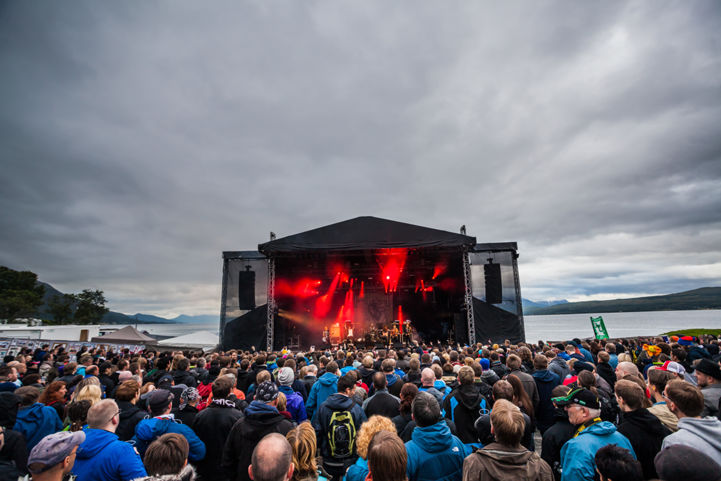
An iconic Celtic Fair and a Jazz Festival in South Ireland
Ireland is well-known for its folk music, green landscapes, and Celtic traditions. One of the oldest fairs in the country takes place in the town of Killorglin, County Kerry, along the Celtic Coast section of EuroVelo 1. Every year between 10 and 12 August, Puck Fair animates the town with celebrations dating back centuries. On the first two days of the event, horse and cattle fairs take place, but the actual celebrations start on the third day. In line with Celtic traditions, the star of the show is a male wild goat. After being caught in the mountains and being taken into town, the goat is crowned ‘King Puck’ in the middle of the town square, on the third day of the fair. Festivities then begin, with pubs open until late and even more Guinness beer consumed than usual.
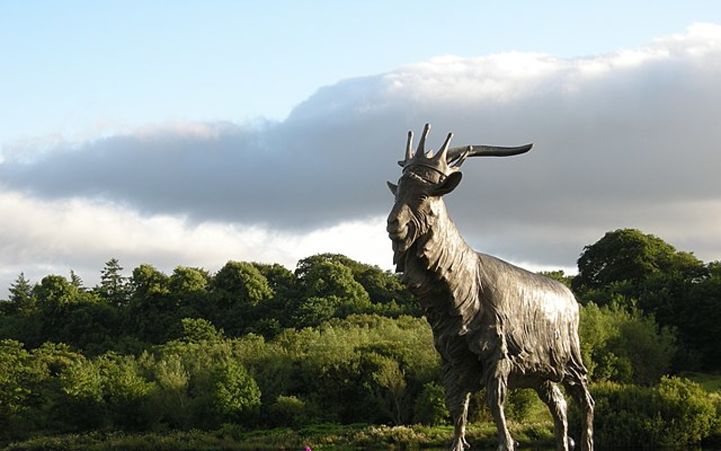
Fancy autumn jazz? EuroVelo 1 takes you to nearby Cork, in the south of Ireland, where the Cork Jazz Festival takes place every year at the end of October, during the usual Bank Holiday weekend. Musicians from all over the world play memorable concerts in several venues across town. Photographic exhibitions are on display, and several other side events animate the city. The Jazz Music Trail links no less than 60 spots, where there is music for everyone to enjoy.
Exploring the Basque culture on both sides of the border between France and Spain
The southwestern part of France and the northeastern part of Spain are a stunning area where the sea meets the Pyrenees. On both sides, there are common traditions and a common language that relate to the idiosyncratic Basque culture, which makes this cross-border region unique in Europe. Century-old festivities take place both in France and in Spain, and they are worth a visit while travelling on the ‘From the Atlantic to the Kingdom of Navarre’ section of EuroVelo 1. Cycling EuroVelo 3 – Pilgrims Route will also take you to discover the Basque Country at both sides of the Pyrenees via the ‘Camino Francés’.
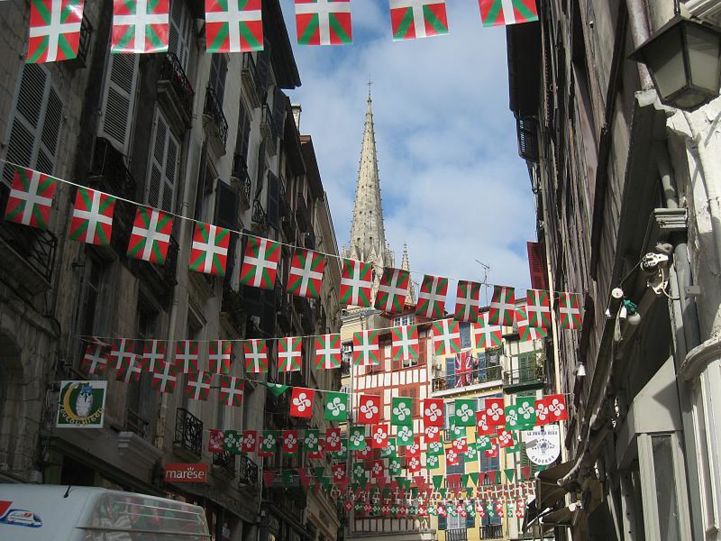
Bayonne and the Northern Basque Country, France
Fêtes de Bayonne (Bayonne festivities) are hard to miss when in the western part of France. Every year in the second half of July, the city is vibrant with people, street parties, concerts, and much more. Held since 1932, the festivities are inspired by ‘Sanfermines’ that take place in nearby Pamplona – more on that soon. The event is recognized as an immaterial heritage of France and brings more than one million people to Bayonne every year. Fully dressed in white and with a red scarf and belt, Bayonne citizens or ‘Festayre’ take part in five days of street parades, concerts, fireworks, and celebrations, starting from the Wednesday before the first weekend of August. The so-called Roi Léon, a huge puppet that overlooks the celebrations from the town hall, is the symbol of the festivities.
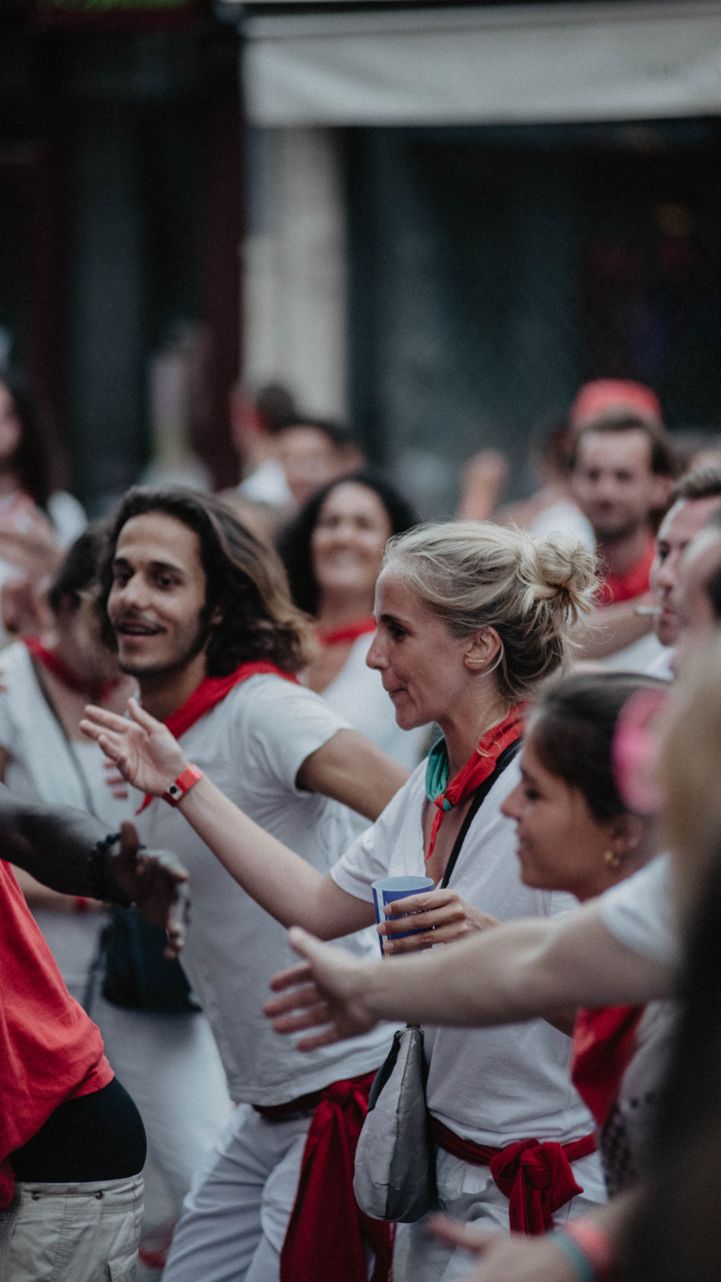
When visiting Bayonne at other times of the year, do not miss a visit to the Basque Museum to learn more about the culture and heritage of the Northern Basque Country, which has Bayonne as its main city in French territory. Conferences, concerts and other events regularly take place on Thursdays.
Pamplona and the Kingdom of Navarre, Spain
Crossing the border between France and Spain and leaving the Atlantic Ocean for a while, you enter the region of Navarre. Its most important and best-known festivity is ‘Sanfermines’ in Pamplona. For a full week, from 7 to 14 July of every year, the city attracts over one million people for one of the most symbolic events in the whole region. Sanfermines are world-famous for the running of the bulls and corrida, but the festival is much more than that and its roots date back centuries.
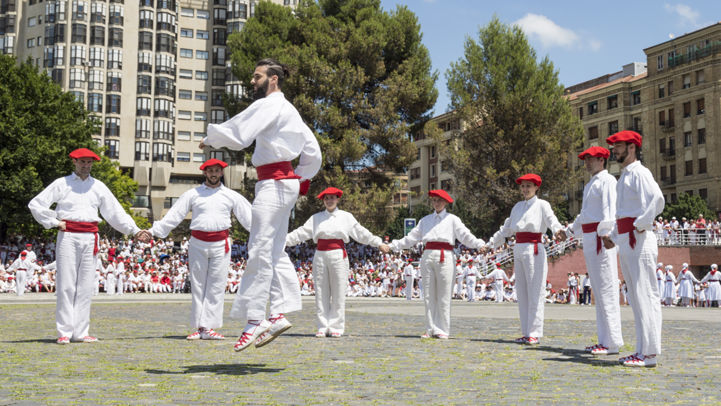
The festival is held in honour of San Fermin, patron saint of Pamplona and co-patron of Navarra. On 7 July, his statue is carried on the streets of the old city, accompanied by dances and music in a procession. Fireworks, traditional sports competitions, the parade of 'Gigantes y cabezudos' (giant heads and figures) and street parties make Sanfermines unique. Experiencing at least a bit of the chaotic, festive vibe of Sanfermines makes it a memorable experience while biking the route.
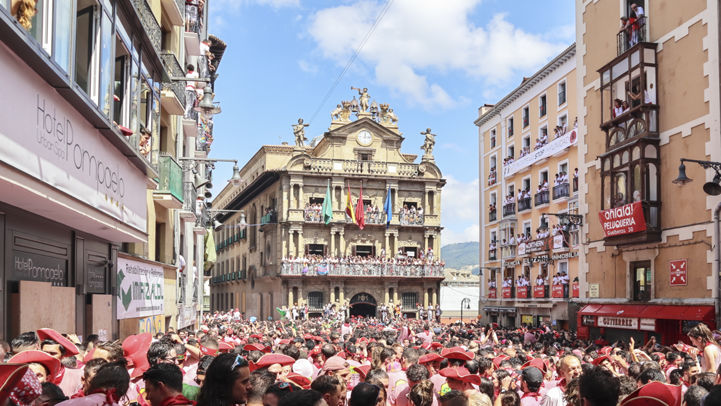
Visiting Pamplona in another season? The Museum of Navarre is a great way to know more about the region’s heritage from the archaeology of the prehistorical times to modernity. Gems such as the roman capitals of the old Pamplona Cathedral and the portrait of the Marquis of San Adrián, one of Goya’s finest works, are part of the museum collection.
Discover events, festivals, and concerts all year long as you bike on EuroVelo 1 and cycle through its heritage, landscapes, and history by visiting the regional or city tourism board websites.
Please keep in mind that most open-air festivals and initiatives take place in the summer and that museums in the northernmost segments of EuroVelo 1 may be closed during the coldest months.
Author(s): Jessica Casagrande
Cover picture: Tom Sekula on Unsplash